Can Hamsters Have Celery Leaves?
The short and simple answer is yes. However, you can’t count it as a main meal.
Celery is a widely used vegetable in various diets, including pets. Its cool and refreshing crunch and low-calorie contents and counts make it a healthy snack for your tiny pet. However, like other foods, the sustainability and suitability of celery for your pet depends on its safety, nutritional value, and how it fits into the hamster’s overall dietary plan.
This article will explore the nutritional value, feeding guidelines, moderation, safety, compatibility of celery for hamsters, potential choking dangers, variety in a hamster’s diet, and how to introduce new foods. It will also investigate food suitable for hamsters and the expert opinion on their diet.
Moreover, monitoring hamster reactions to celery consumption, misconceptions about fresh foods, required dietary variations for different hamster species, signs of an allergic reaction, and frequency of celery feeding your pet.
Safety and Suitability of Celery for Hamsters
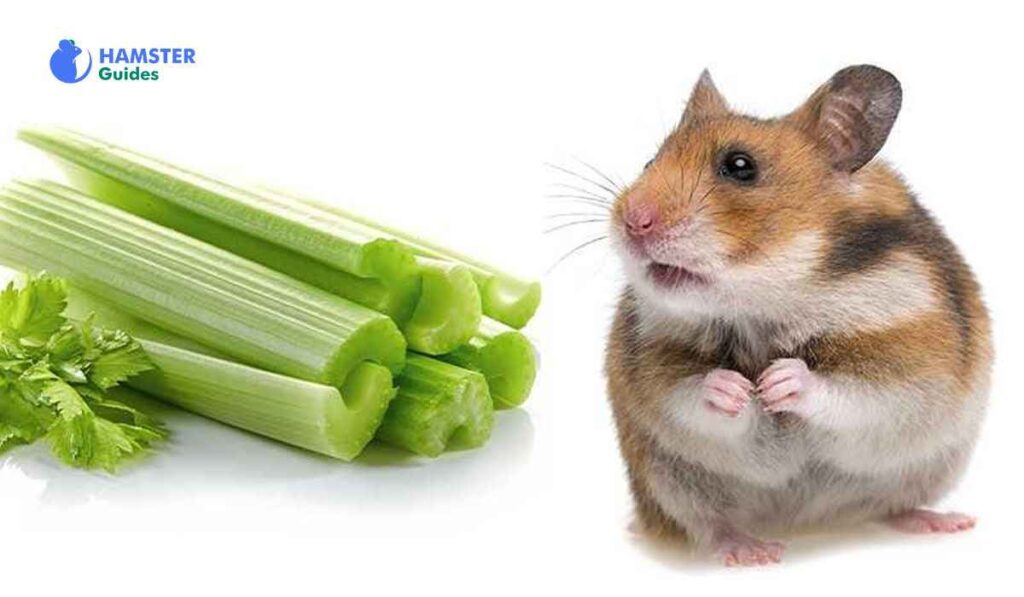
Pet Hamsters are tiny little animals. They have specific nutritional requirements that are different from those of larger animals. Certain kinds of food may not be appropriate for hamsters, even if they are nutritious and safe for humans and more giant animals. That’s why it is essential to determine first whether celery is safe and suitable for hamsters.
Extra Advice: Remove the tough stalks of celery before offering it to your pet. As it can be a choking risk for hamsters.
Nutritional Benefits of Celery for Hamsters
Celery is a fibrous and low-calorie veggie. It is loaded with nutrients like vitamin K, folate, and potassium. These nutrients provide various health advantages, such as better digestion, lower blood pressure, decreased inflammation, and enhanced heart health. Celery can help hamsters with several benefits, such as improving digestive health, reducing obesity, and supporting their immune system.
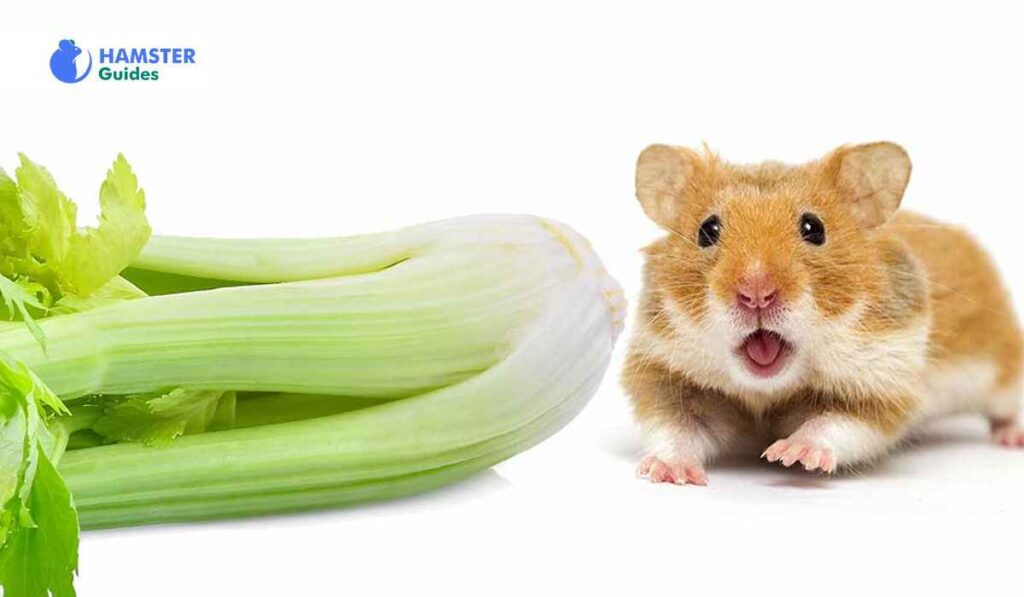
While celery is rich in fiber, vitamins, and minerals, making it a good nutritious choice for hamsters. It also contains antioxidants that help reduce inflammatory disorders, protect cells from damage, and fight infections. The details are as follows:
Related Resource: Can Hamsters Eat Raw Potatoes?
Nutritional Value Of Celery
| Nutrient | Per 100g of Celery | Recommended Daily Intake for Adult Hamsters |
| Calories | 14 kcal | 50-70 kcal |
| Fat | 0.2 g | 1-2 g |
| Fiber | 1.7 g | 2-4 g |
| Vitamin C | 5 mg | 30-50 mg |
| Vitamin K | 169 µg | 50-100 µg |
| Potassium | 263 mg | 200-300 mg |
| Calcium | 40 mg | 100-200 mg |
| Water | 95.4 g | 50-70 mL |
Feeding Recommendations And Dietary Moderation For Hamsters
A hamster needs a diet that should consist of a balanced mix of fiber, protein, and veggies. Commercial feed that contains the proper nutrients is the best approach to ensure a hamster’s diet is balanced.
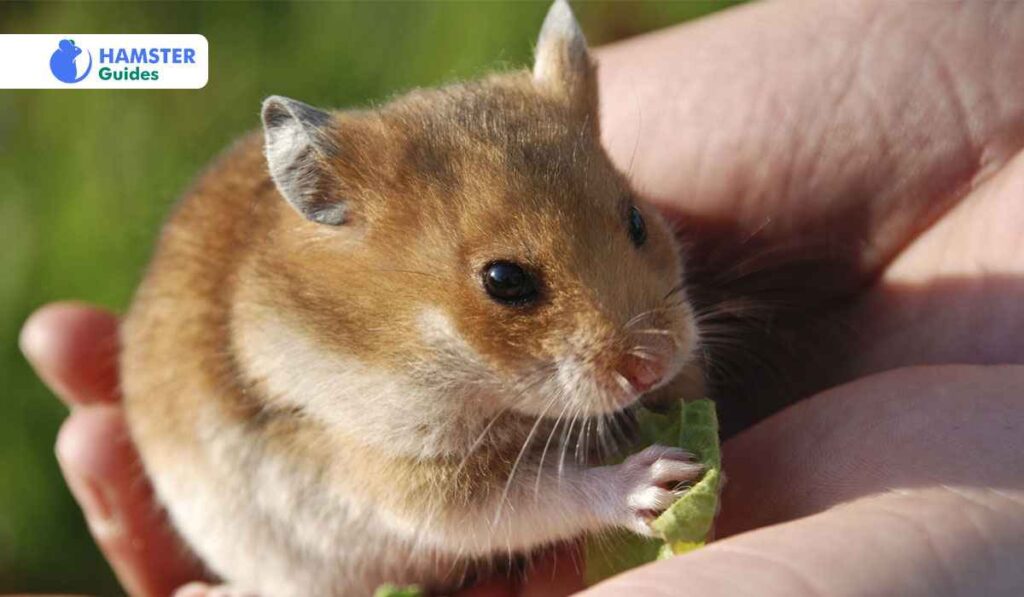
However, you may also include vegetables like celery in your hamster’s diet. It is vital that when you introduce celery into their diet, give it to them in moderation. The best idea is to feed your hamster a small piece of celery equal to the size of their thumb once or twice a week.
Extra Advice: wash the leaves thoroughly to remove dirt and pesticides.
Safety Measures And Potential Choking Risks Associated With Celery
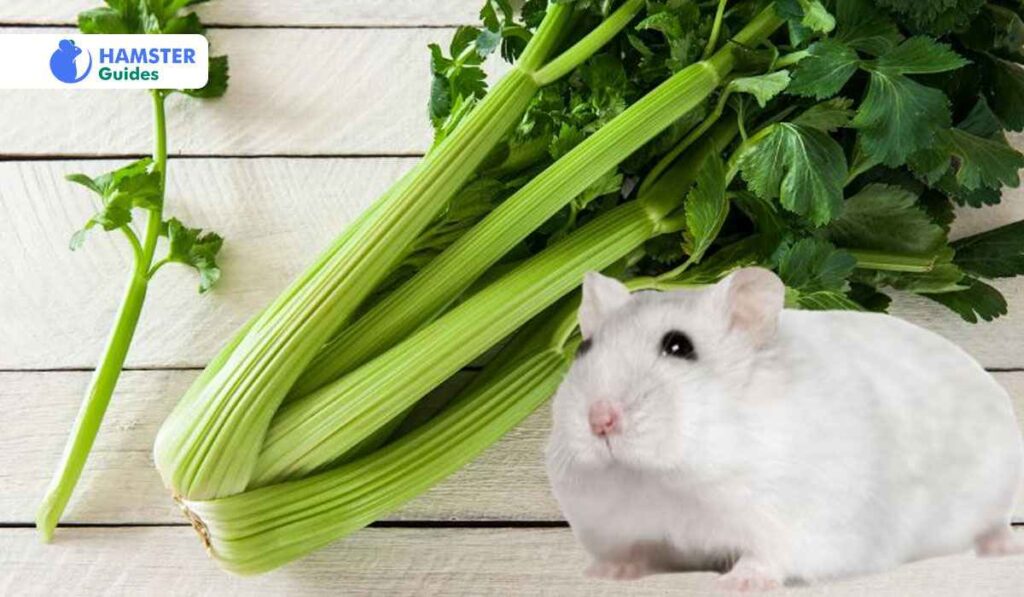
Celery’s stringy and rugged texture can cause choking hazards for hamsters. Therefore, slicing celery into small pieces is essential to prevent choking hazards. It is also vital to avoid giving them stricter portions of celery, including the long string stalks, as these can lead to impaction and digestive issues.
Related Resource: Can Hamsters Eat Bok Choy?
Varieties in the Diet of a Hamster and Introduction of New Foods
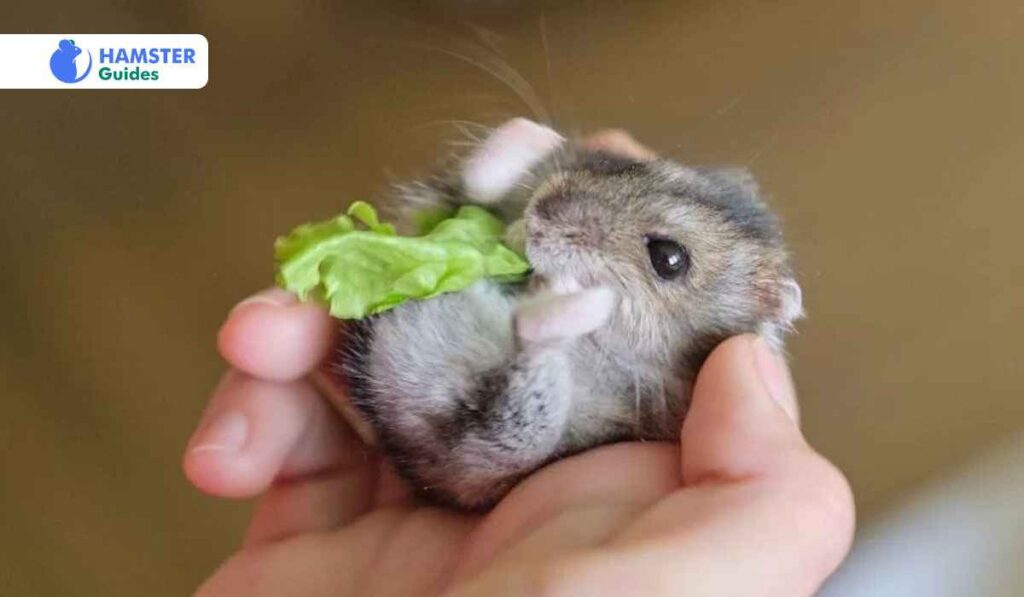
Naturally, Hamsters eat a wide variety of plants, seeds, and insects. So it’s essential to provide them with various foods to ensure they get all the necessary nutrients according to their needs.
When introducing new foods, start with a small amount of new food mixed in with their usual meal. Monitor your hamster’s reaction to fresh foods and increase the amount if your hamster does not show any signs of digestive disorder.
Read More: Can Dwarf Hamsters Eat Apples?
Monitoring Hamster Reactions to New Foods
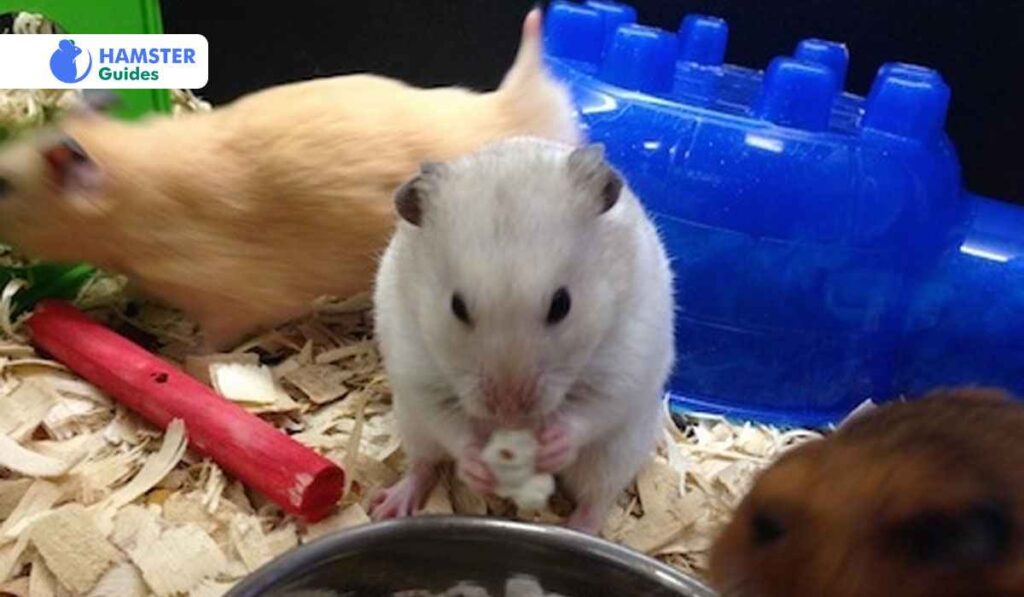
When hamsters are given new diets, they may have digestive disorders, for example, diarrhea, constipation, and loss of appetite. So, it is essential to carefully monitor your hamster’s reactions as you introduce new foods. If you notice any change or unexpected reactions, discontinue the new food and consult your veterinarian.
Expert Views on Hamster Diet and Celery Consumption
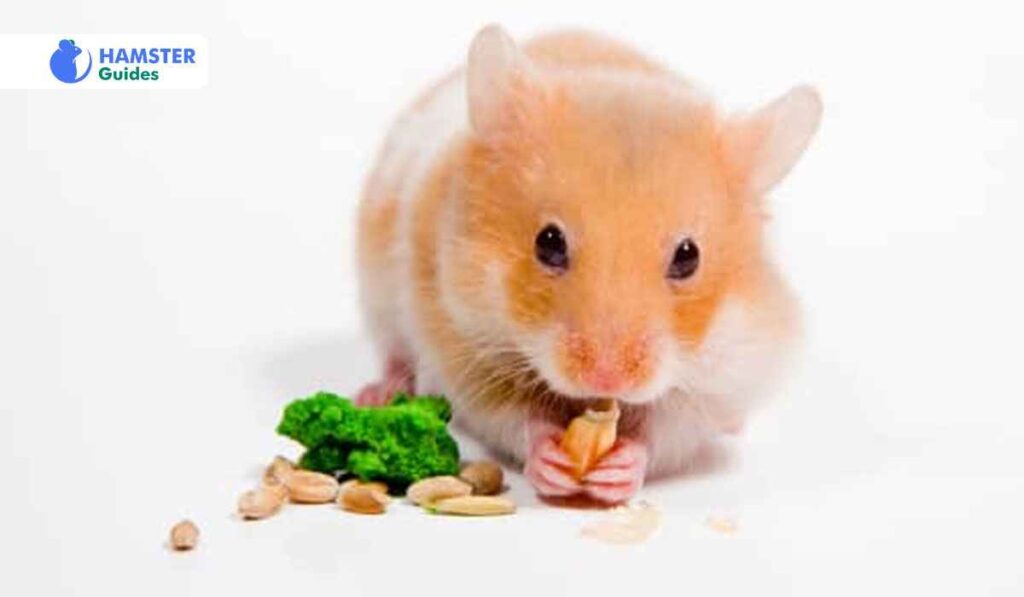
According to the experts, celery may be a practical addition to a hamster’s diet. It must be provided in small amounts in the beginning. But it is essential to ensure it does not replace the hamster’s regular diet of commercial feed.
Related Resource: Can Hamsters Eat Bird Food?
Myths regarding Suitable Hamster Foods
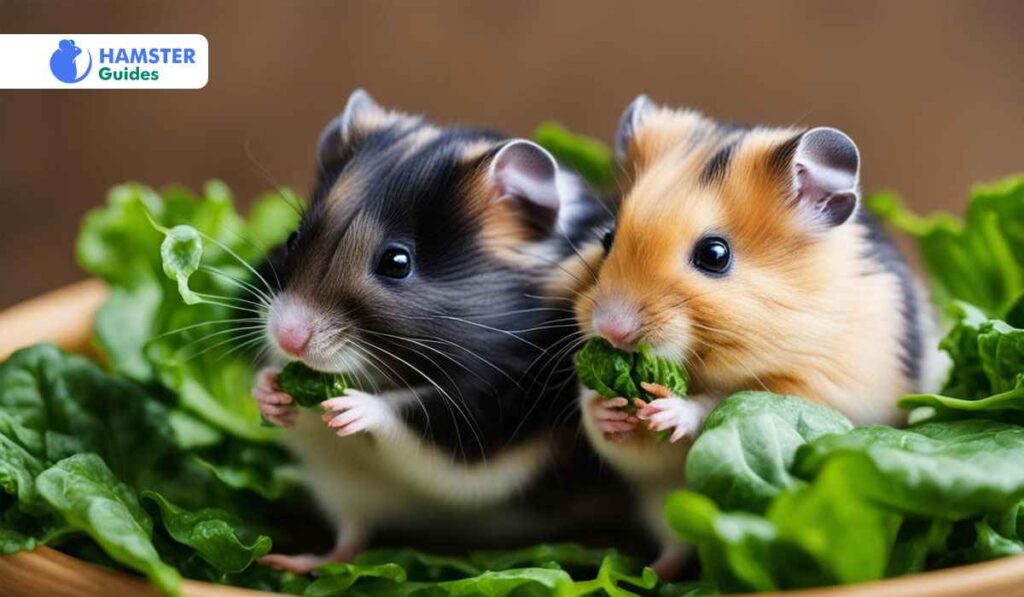
Regarding suitable hamster foods, many things may be improved, such as giving them only one type of diet. If you just give one type of food to your hamster, it can lead to a nutrient deficiency or boredom. A balanced diet must contain a variety of foods, such as vegetables, fruits, and seeds.
Freshness Counts: Get rid of any fruit that hasn’t been consumed immediately to keep the environment tidy and avoid rotting.
Enrichment Activities Using Celery for Hamsters
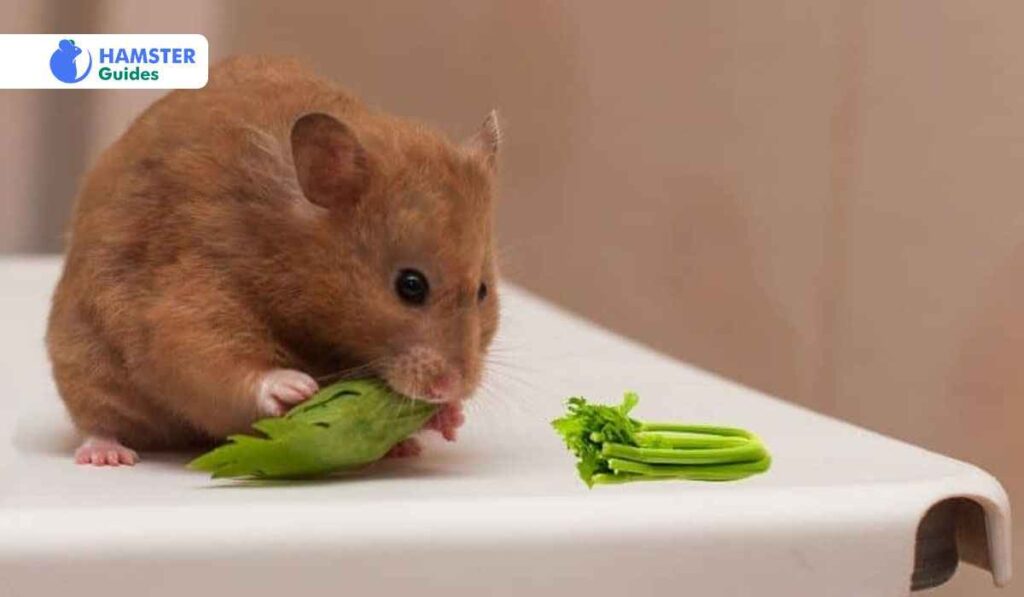
Celery may be used as an enrichment activity to motivate hamsters. For example, you can use celery as a hunting tool by placing small food slices inside the stalk for them to find and eat.
Related Resource: Can Hamsters Eat Cashews?
Dietary Differences Between Different Hamster Breeds
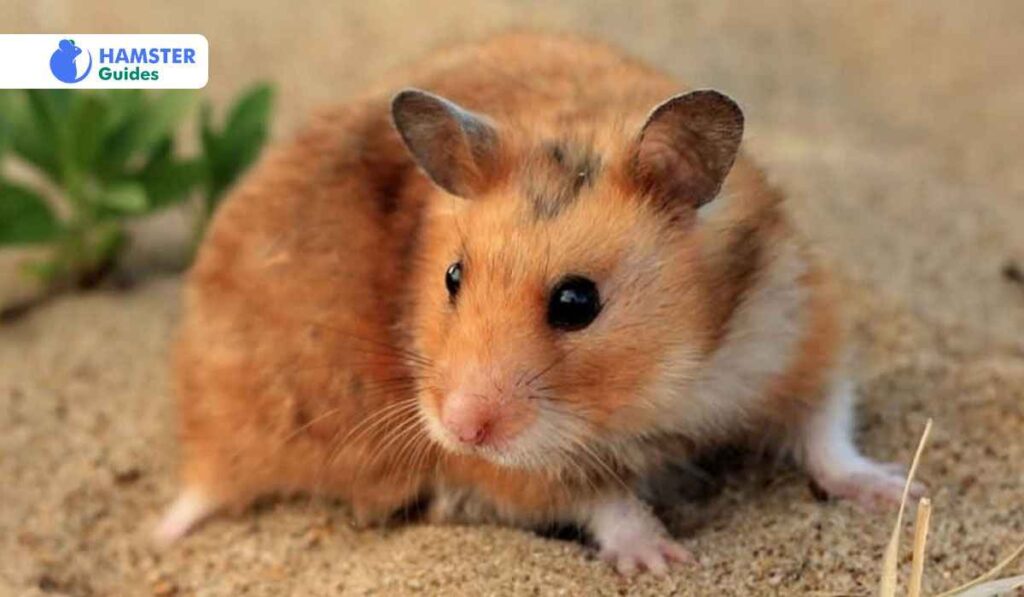
Dietary requirements differ in different hamster breeds based on size, age, and activity levels. That’s why it is essential to consult a vet who can advise you on the nutritional needs of your hamster’s breed.
Extra Advice: moderation is key. Give celery to your pet in small pieces in a limited amount.
Frequency of Feeding Celery to Hamsters
Celery should be given to hamsters in moderation, once or twice a week. Giving them celery too frequently might lead to digestive disorders and impaction.
Signs of Allergic Reactions in Hamsters
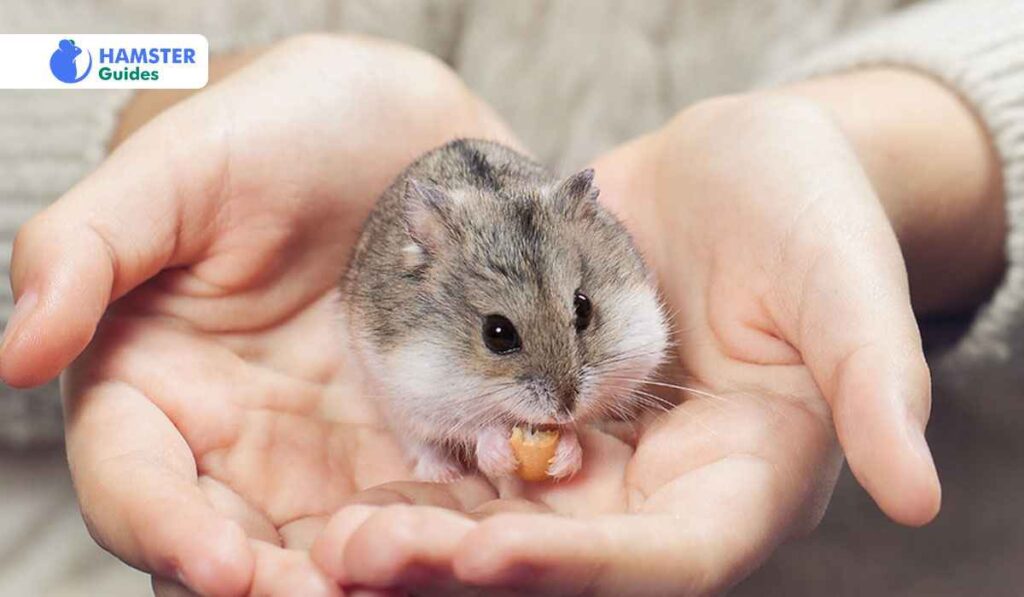
When hamsters are introduced to a new meal, they may experience allergic reactions. Indications of allergic reactions in hamsters include diarrhea, rashes on the skin, and fur loss. If your hamster shows any symptoms of an allergic reaction, stop giving them celery or any other fresh foods.
The Final Words
Celery might be a healthy addition to a hamster’s diet but must be given in small amounts. Giving them celery too frequently or in excess amounts might lead to digestive problems and impaction. It’s important to closely look at their reactions when introducing new foods and consult a vet for advice if it is required.
Using celery to create exciting and entertaining activities can help to keep them entertained and engaged. A balanced diet for hamsters should blend various foods, including commercial feed and a mix of vegetables and seeds.
Hope your hamster enjoys its meal!

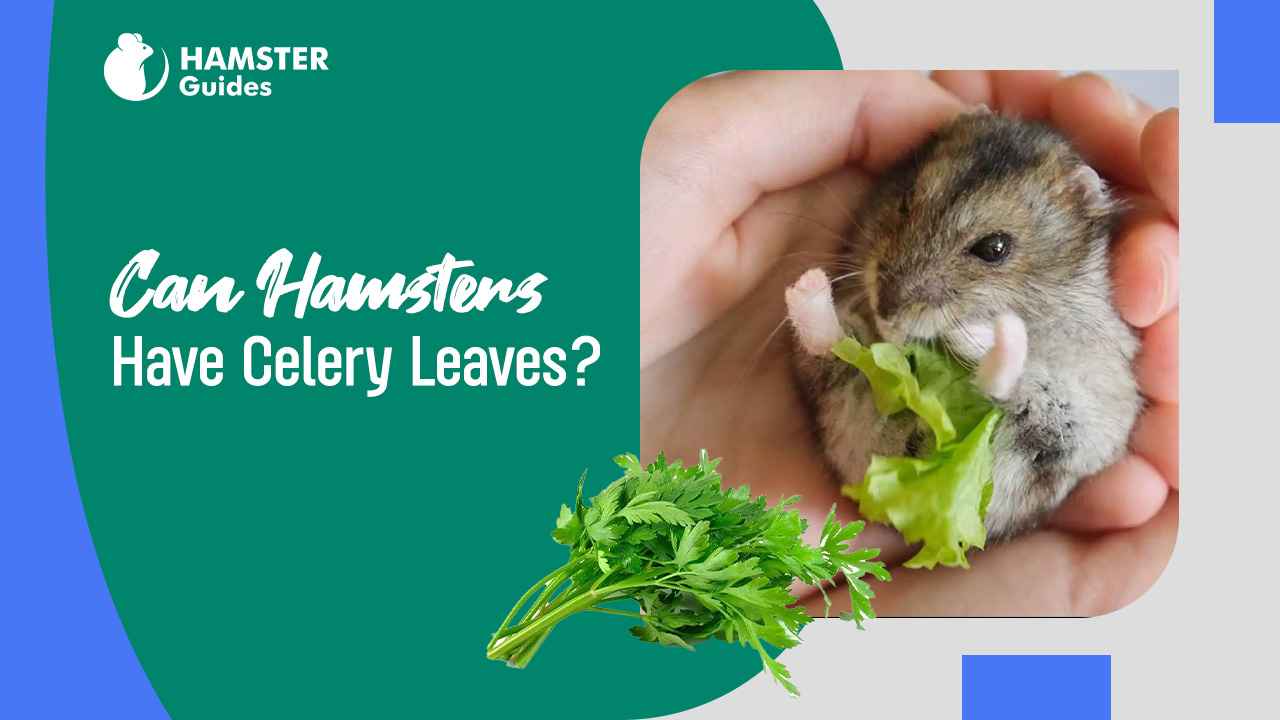







Leave a Reply